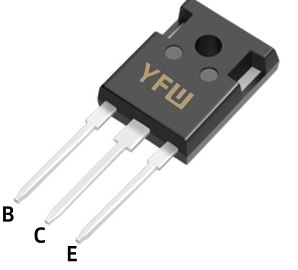How to Use Power Transistors
Date:2025-05-29 Categories:Product knowledge Hits:429 From:Guangdong Youfeng Microelectronics Co., Ltd
Power transistors are essential components in many electronic circuits, designed to handle significant amounts of power. Understanding how to use them correctly is crucial for ensuring circuit performance and reliability. Here’s a comprehensive guide on their usage.
First, it’s vital to select the appropriate
Power transistors for your specific application. Consider parameters such as maximum collector current (Ic), collector-emitter voltage (Vce), power dissipation capability, and frequency response. Matching the transistor’s ratings to the requirements of your circuit prevents damage and ensures optimal operation. For example, if your circuit requires a high voltage application, choose a transistor with a sufficiently high Vce rating.
Next, proper biasing is key.
Power transistors typically operate in the active region to achieve linear amplification or in the saturation region for switching applications. In an amplification circuit, set up a biasing network to establish the correct quiescent point (Q-point) to avoid distortion. This often involves using voltage dividers and emitter resistors to stabilize the base current and maintain a consistent collector current. For switching applications, ensure the transistor is driven hard enough to fully turn on (saturate) or off, minimizing power loss during the transition.

Previous:
Classification, Structure, and Principle of MOSFET
Next:
How to Use Power Transistors 2
